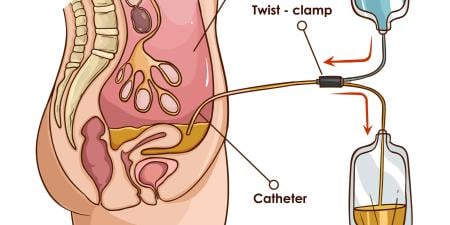Case
Dr. Annette Edwards, a solo obstetrician-gynecologist practicing in the heart of a large city, has always prided herself on the care she delivers to her patients. She accepts most insurance plans, Medicaid, and Medicare from her patients. Dr. Edwards has always felt a commitment to the disadvantaged in her community, so much so that for one afternoon weekly, she opens her office to do solely pro bono gynecological exams to disadvantaged women in the area. Word spread quickly about her services and her comforting practice style, to the point that she has been caring for some uninsured women who cannot pay for services throughout their reproductive years.
In recent years, however, the managed care organizations that provide coverage to the majority of her insured patients have cut reimbursement for many gynecological services by more than 15 percent. As costs have risen and reimbursement for services has decreased, Dr. Edwards has struggled to provide a high level of service to all her patients, while still making a comfortable living. In the last month, she has had to consider canceling her pro bono clinic, so that she can see more insured patients during the week.
Dr. Edwards realizes that her pro bono patients—many of whom she has followed for years—might suffer if she eliminates her pro bono clinic altogether. On the other hand, decreased reimbursement and increasing malpractice premiums are putting a real strain on her ability to practice as she wants to. She decides to call a trusted colleague for advice about her predicament.
Commentary
A great many medical students begin their medical training with a sincere desire to help the less fortunate. A variety of different characteristics motivate individuals drawn to medicine, but a common denominator is a willingness to work hard for the benefit of others. Indeed, medicine offers the perfect opportunity to donate time and energy. Despite recent changes in medical economics, American physicians are very well paid. Whether the comparison is to other American citizens, or to physicians in other societies, US doctors are reimbursed handsomely. Furthermore, the services we have to offer are highly valued and are becoming less accessible to others with every passing day. The ranks of the uninsured and underinsured are again growing. A US Census Bureau report released in September 2003 estimates the uninsured population at 43.6 million, or 15.2 percent of the population.1 Those with inadequate insurance compound the problem substantially.
And yet, many of those well-intentioned students and residents later conclude that they cannot afford to do what they once viewed as an obvious choice. An insidious acculturation occurs in most young doctors, inevitably leaving them comparing themselves to other doctors, not their former selves. Furthermore, many physicians (and their spouses) rightly feel that the residency years of physical and financial deprivation justify a better-than-average lifestyle.
Physicians who remain dedicated to the ideal of providing health care to those in need have a number of options available. The most concrete is the path chosen by Dr. Annette Edwards in this case. She has provided direct personal care at no charge. In point of fact, she provides health care to the needy in another important way; she accepts Medicaid. It is the rare private practitioner who accepts standard (non-HMO) Medicaid patients. Medicaid programs provide insurance for 14 million Americans,1 but the dismal reimbursement rate to physicians discourages all but token participation by physicians in private practice. Dr. Edwards has opted to care for poor patients in the same manner and location as her other patients through pro bono work and Medicaid participation.
What other options are available for concerned physicians? There are a number of volunteer opportunities for physicians in established facilities, rather than providing such service in one's own practice. The range of possibilities in this category varies from locale to locale. Such facilities as free clinics sprout up (and fail, for lack of support) fairly frequently. Listings of current opportunities can be found on the Internet from such organizations as the American Medical Association (AMA),2 American College of Physicians (ACP),3 and American Academy of Family Physicians (AAFP)4 and other sources such as the New England Journal of Medicine.5
Another option is to choose employment by an institution or agency that provides care to the uninsured or underinsured. Depending on one's local situation, there are municipal, county, or not-for-profit facilities that offer comprehensive care to the disadvantaged. These full- or part-time positions provide a lower salary than private practice but are still quite comfortable.
Finally, there are more activist channels for those who believe a fundamental change in our health care system is the best way to help the largest number of underserved citizens. Membership in, and volunteering for, organizations such as Physicians for a National Health Program (PNHP) is one such option.6
With such a wide choice of opportunities to help the needy, how do you choose? You can't do everything. Exactly! There is a human limit to the amount of help any one person can provide. More importantly, the real extent of that help goes beyond the direct personal care provided by any one doctor. Such care is enhanced by the spirit with which it is given. The delight and enthusiasm that often accompanies such work is infectious. By letting colleagues know how much this work means to you, you can magnify its impact.
So what advice do you give to Dr. Edwards? As is often the case, one must listen before recommending. Dr. Edwards should be offered the opportunity to talk about what her work means to her. How do various activities enrich her life? How does she prioritize them? Can any of them be consolidated? She is fortunate to have parts of her professional life she finds so rewarding, and should be able to find a way to either continue the most valuable, or find a meaningful substitute.
References
-
US Census Bureau. Health insurance coverage in the United States: 2002. Current population survey. September 2003:1. Accessed February 1, 2004.
-
American Medical Association Web site. AMA Medical Student Section. Community service committee page. Accessed February 1, 2004.
-
American College of Physicians Web site. Volunteerism subcommittee. Volunteering as a physician: opportunities and resources. Accessed February 1, 2004.
-
American Academy of Family Physicians Web site. Volunteering and caring for the uninsured. Accessed February 1, 2004.
-
Darves B. NEJM Career Center for Physicians. Volunteer work brings both personal and professional rewards. June 2003. Accessed February 1, 2004.
-
Physicians for a National Health Program Web site. Accessed February 11, 2004.



